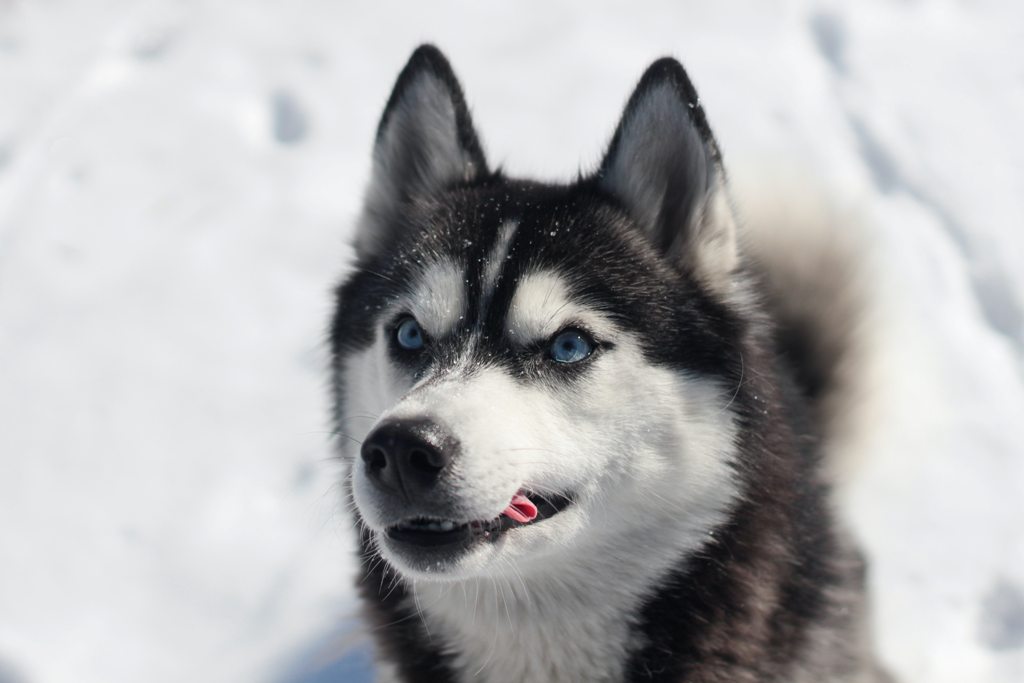Siberian Husky Health Problems and Solutions
Siberian Husky’s health problems are a matter of great concern. Like other breeds of dogs, the Siberian husky suffers from various health problems. This is a concern for all dog owners. So you need to be well aware of your Siberian Husky’s health problems and their solutions.
Like other dog breeds, the Siberian Husky suffers from a few health problems. However, if given proper care and attention, their health problems can be kept under control. It is important to remember that they can live up to twelve to fifteen years if their health problems are kept under control. Their health problems include genetic eye diseases, hip dysplasia, hair growth problems, weight problems, etc.
Always keep an eye on your Siberian Husky’s health. Ask your vet what to do to keep them healthy and keep your husky healthy in the long run. If they are well cared for, they do not require frequent treatments like other dog breeds. Let’s know Husky’s problems and solutions.
The following are the Siberian husky health problems and their solutions:

1. Eye Disorders And Their Solutions
Siberian huskies suffer from the most eye-related problems. This is a common health issue they have. But it can sometimes become serious. Huskies can suffer from a variety of eye disorders. Their eye disorders include hereditary or juvenile cataracts, corneal dystrophy, progressive retinal atrophy, and Uveodermatological syndromes.
So as a Siberian Husky owner, I get to know about these related eye disorders. And have your Siberian Husky’s eyes checked regularly by a veterinarian.
i. Cataract Problem
Cataract problems are among the most common Siberian husky health problems. Cataracts can start at a very young age in the Siberian Husky dog breed. These symptoms can be seen from the age of 3 months. These are commonly known as juvenile cataracts. This problem occurs in their teenage years. This problem is no longer seen in them when they become adults. These cataracts can affect up to 10% of Huskies.
A dog’s eye contains water and protein. In the lens of their eyes, the proteins clump together and form a cloud-like substance. Then cataracts form in their eyes. This cloudy film distorts the lens of the eye and prevents light from entering. This problem can affect both eyes. It can lead to blindness if not taken care of regularly.
So, if you take regular care of your Siberian husky from the beginning, then this problem can be cured. Also, if you are concerned about your husky’s cataracts, consult your veterinarian immediately. Use medication or anti-inflammatory eye drops as advised by them. Although these drops will not directly treat cataracts or restore vision, they do help prevent lens-induced glaucoma. But don’t despair; getting your Siberian husky on the right medication will go a long way toward reducing complications.
ii. Corneal Dystrophy
Corneal dystrophy is not very dangerous for Siberian husky health problems. Corneal dystrophy is a disease of the cornea of the eye that can be seen as small white dots in the cornea. This can cause your Siberian husky to have blurred vision. However, this disorder does not cause much harm to your Siberian husky and does not cause blindness.
Corneal dystrophy occurs mostly in female huskies. Corneal dystrophy can affect both eyes of the Siberian husky and can occur at any age. Corneal dystrophy can be vascularized by the continuous sloughing of mineral deposits in the eye.
At this time, there is no such treatment for corneal dystrophy. However, these diseases can be treated by changing your Siberian husky’s diet, such as feeding a low-fat and high-fiber diet.
If this results in a deep ulcer, a grafting procedure may be required to heal the cornea. And consult your vet for that. However, most dogs with corneal dystrophy do not require surgery.
iii. Progressive Retinal Atrophy
Progressive retinal atrophy is also one of the causes of Siberian husky health problems. Progressive retinal atrophy is a hereditary disease of the Siberian husky. This disorder can affect your husky’s eye health and his ability to see. If it goes undetected, there is a risk of blindness.
Progressive retinal atrophy is a degenerative disease of the retina of the eye. It first affects the retinal cells called rods and cones. It can also erode the pigmented epithelium layer protecting the retinal cells called rods and cones. As a result, your Husky can lead to blindness.
This disease will cause your husky to have trouble seeing in dim light or at night. However, as the rods deteriorate further, blindness may occur in them during the day.
Early detection of progressive retinal atrophy problems is essential. This is a very difficult and expensive solution. There is currently no effective treatment for retinal atrophy. However, veterinarians offer a cure for progressive retinal atrophy by introducing a normal copy of the gene associated with gene therapy. Although it is not currently a widely available therapy or cure,
iv. Uveodermatological Syndromes
Uveodermatological syndromes are a cause of Siberian husky health problems. Uveodermatologic syndrome is a rare disease of the Siberian husky. It can be very severe, causing blindness in your Siberian husky. This causes your husky’s immune system to make antibodies against the light-sensitive cells behind the eyes and the skin’s pigment cells. This can cause eye sores. The eyes are red and sore, the skin on the face and footpads is scaly, and the fur is discolored.
Veterinarians mainly focus on eye problems in the case of “Uveodermatological” diseases among Siberian husky health problems. As it is a rare and serious disease and can lead to blindness, early intervention is crucial.
Systemic immunosuppressive drugs are usually used temporarily to treat this eye disease. Dogs with uveodermatologic syndrome have serious eye problems that require prolonged treatment. This results in repeated eye problems and the risk of blindness. Aggressive therapy to maintain the immune system can help relieve eye inflammation and reduce the risk of blindness.

2. Hip Dysplasia And Its Solution
Hip dysplasia is one of the most common signs of Siberian Husky health problems. Hip dysplasia is a deformity of the hip that occurs during the growth of your Siberian husky. which may be in one or both of their hips. This causes laxity in your Siberian Husky’s hip joints and degenerative joint disease, or osteoarthritis, as your Siberian Husky’s body attempts to stabilize the loose hip joint.
Hip dysplasia is a genetic disease. Which may come from your Siberian Husky’s parents or other close relatives of his breed. The disease is influenced by factors such as environment, diet, exercise, growth rate, muscle mass, and hormones. Since this disease is usually seen in large-breed dogs, it is important to maintain a normal weight without overfeeding them.
Hip dysplasia can often be exacerbated by strenuous exercise and excessive stair climbing. This causes your Siberian husky to appear wobbly and reluctant to get up from a sitting or lying position. and also shows reluctance to go up and down stairs.
Hip dysplasia can be diagnosed with a hip radiograph procedure under anesthesia. Any pet showing signs of hip dysplasia should be radiographed as soon as possible.
Hip dysplasia is very difficult to prevent. Hip dysplasia is a genetic disease. This can be avoided by genetic testing or by knowing all the history of your Siberian husky from a breeder before bringing it home.
Since excess weight puts pressure on the hip joints, hip dysplasia can be prevented by losing weight. It can also be prevented through physical therapy. Dogs with hip dysplasia should receive veterinary-approved chondroitin sulfate, glucosamine, and omega-3 fatty acid nutritional supplements. Dogs with hip dysplasia benefit from regular injections of polysulfated glycosaminoglycan.
3. Follicular Dysplasia And Its Solution
Different types of follicular dysplasia can occur in your Siberian husky. which can occur at different ages and affect different breeds of dogs. It starts slowly and may increase or decrease during the first three years of life.
Follicular dysplasia is caused by abnormalities in the hair follicles of your Siberian husky. This can lead to symptoms such as hair loss or irregular hair growth.
There are different types of follicular dysplasia. For example-
i. Cyclic Follicular Dysplasia:
This type of follicular dysplasia is thought to be caused by the exposure of dogs to daylight. However, in these cases, melatonin treatment can provide rapid recovery.
ii. Color Dilution Dysplasia:
This type of follicular dysplasia can be very poorly understood. However, it is believed to be caused by macromelanosomes in the hair shaft. This condition can appear gradually from the age of 1-3 years in your husky. This often results in the complete shedding of the coat. This can lead to papules, pustules, pyoderma, and pruritus complications in the affected areas of the coat.
iii. Black Hair Follicular Dysplasia:
It is thought to be caused by a genetic defect that affects the formation of the hair shaft and the transfer of melanin. This condition affects black-haired dogs more. This can result in complete black hair alopecia in affected dogs by 8–9 months of age. However, it is seen in breeds of dogs with bi- or tri-color coats.
There is no known cure for follicular dysplasia. Veterinarians recommend using antibacterial shampoos and conditioners, topical applications, and coat treatments for your dog.
4. Hypothyroidism And Its Solution
Hypothyroidism is the most dangerous of the Siberian husky health problems. Hypothyroidism is caused by abnormal secretion of the thyroid gland. It can affect your Siberian husky. Symptoms of this condition include weight gain without an increase in appetite, lethargy, cold intolerance, thinning of the hair coat, excessive shedding, dry and dull hair, increased black pigmentation on the skin, ear infections, and shaving. Later failure of hair regrowth, slow heartbeat, etc.
Hypothyroidism results in decreased production of hormones secreted by the thyroid. As your Siberian husky ages, this tendency may appear. So consult a vet as soon as possible when these symptoms appear in your husky or you suspect
Hypothyroidism is treated with a synthetic version of the hormone secreted by the thyroid. which will last for the lifetime of your Siberian husky. Your veterinarian adjusts this dose based on your husky’s growth.
Hypothyroidism is very difficult to prevent. Veterinarians are still unable to find a way to prevent this disease. However, if you exercise your husky regularly and keep their weight under control, the disease can be prevented in some cases.
Healthy Huskies And Happy Owners
Siberian Huskies are very strong, active, and healthy. They are mostly healthy. They do not need to be taken to the vet as often. However, since most problems with Siberian Huskies are genetic, bring your Siberian Husky home from a good breeder who knows all the history of their birth or their parents. But always be aware of Husky’s problems and solutions.
Remember, your Siberian husky is your pet. Keep them healthy. The healthier they are, the happier your life will be. So the joy of becoming a healthy husky and a happy owner is different.
Hi, I’m Piyas! I am a dog lover, trainer & blogger. I am passionate about pet dogs and love to learn and research how to care for, train, and learn all about them.


